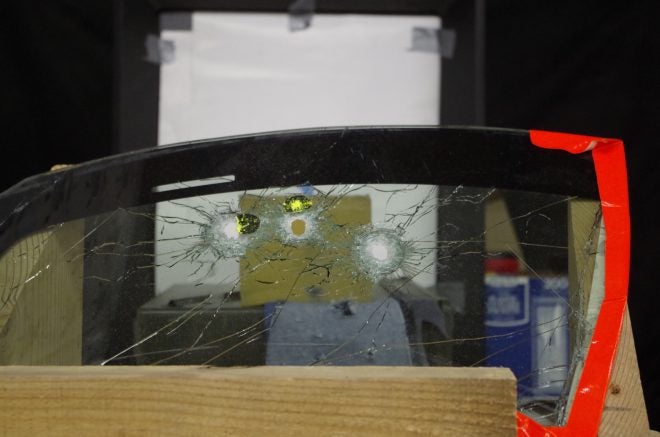Welcome to the fourth installment of our ballistic gel testing series. The current series is sponsored by Clark Armory who provided the testing medium (Clark Armory sent us a couple of new gels this month–it is like Christmas in June!) and rounds.
Technical Details of Hornady Critical Defense in .45ACP
The Hornady Critical Defense (both variations) are following the trend of copper projectiles that flower open creating a much larger wound channel.
The patented Flex Tip® technology used in Critical Defense® ammunition eliminates the clogging and inconsistency that often plagues hollow point bullets. Hornady® achieved this by using the same tip material as used in LEVERevolution® ammunition.
All Critical Defense® ammunition is loaded in nickel cases for increased visibility in low-light situations. Premium low fl ash propellants deliver proven performance, even in very shortbarreled handguns, and won’t disrupt your vision. Reliable expansion and dependable terminal performance can be counted on for concealed carry/personal protection.
It is also important to make the distinction that we tested Hornady Critical DEFENSE (not DUTY). Hornady makes a distinction between the two at: http://www.hornady.com/support/critical-duty-and-critical-defense

We fired the rounds with a Glock 17 and the HK. I really wanted to test one of the Jacks (in .308) but the gel is not meant for that…
There were also a few more technical details on the Hornady rounds.
.45 ACP
- Caliber: .45 ACP
- Weight: 185 gr.
- Bullet: Copper Hollow Point
- Velocity: 1000 fps
- Energy: 411 ft. lbs.
- Penetration: 13.75 in. (heavy clothing)
9mm Luger
- Caliber: 9mm Luger
- Weight: 115 gr.
- Bullet: Copper Hollow Point
- Velocity: 1140 fps
- Energy: 332 ft. lbs.
- Penetration: 11.5 in. (heavy clothing)
About Hornady:
Hornady Manufacturing Company is an American manufacturer of ammunition and handloading components, based in Grand Island, Nebraska.
Hornady’s website: http://www.hornady.com
Test Parameters and Setup
Our testing format is to test a single round (potentially with multiple calibers) per article against the following four tests: against bare gel, gel covered with several layers of clothing, gel behind drywall and gel behind automotive glass (both of the last two will also have a layer of clothing over them).
First order of business will be testing the density of the gel with a BB fired at a known rate. We will fire this into a corner of the gel
Each round will be fired through a chronograph at the ballistic gel and this
The test will look like this:
- Set up shooting position and recording devices
- Fire two rounds through the chronograph at the bullet trap
- Set up naked gel
- Fire BB at 500 to 600 feet per second at Gel and photograph penetration
- Fire round at gel while filming video and then photograph penetration from front, side and top.
- Repeat steps 3 to 5 with the other tests.
We again attempted to chronograph both rounds from our chronographs, and again had failures. We think it is an issue with the lighting in the test area (we are going to try some different lighting options next time.
Test 1: Bare Gel
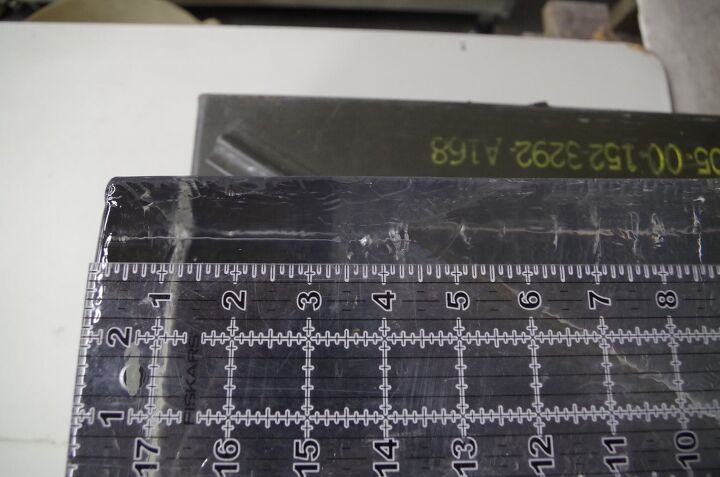
Bare Gel – BB
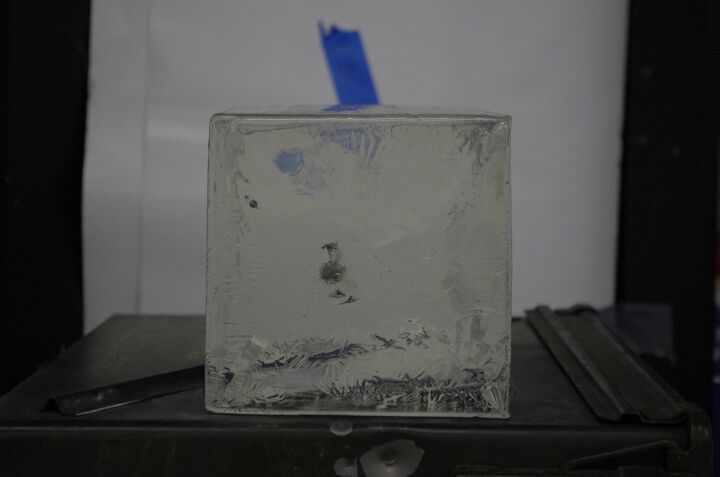
Bare Gel – 9mm – Front
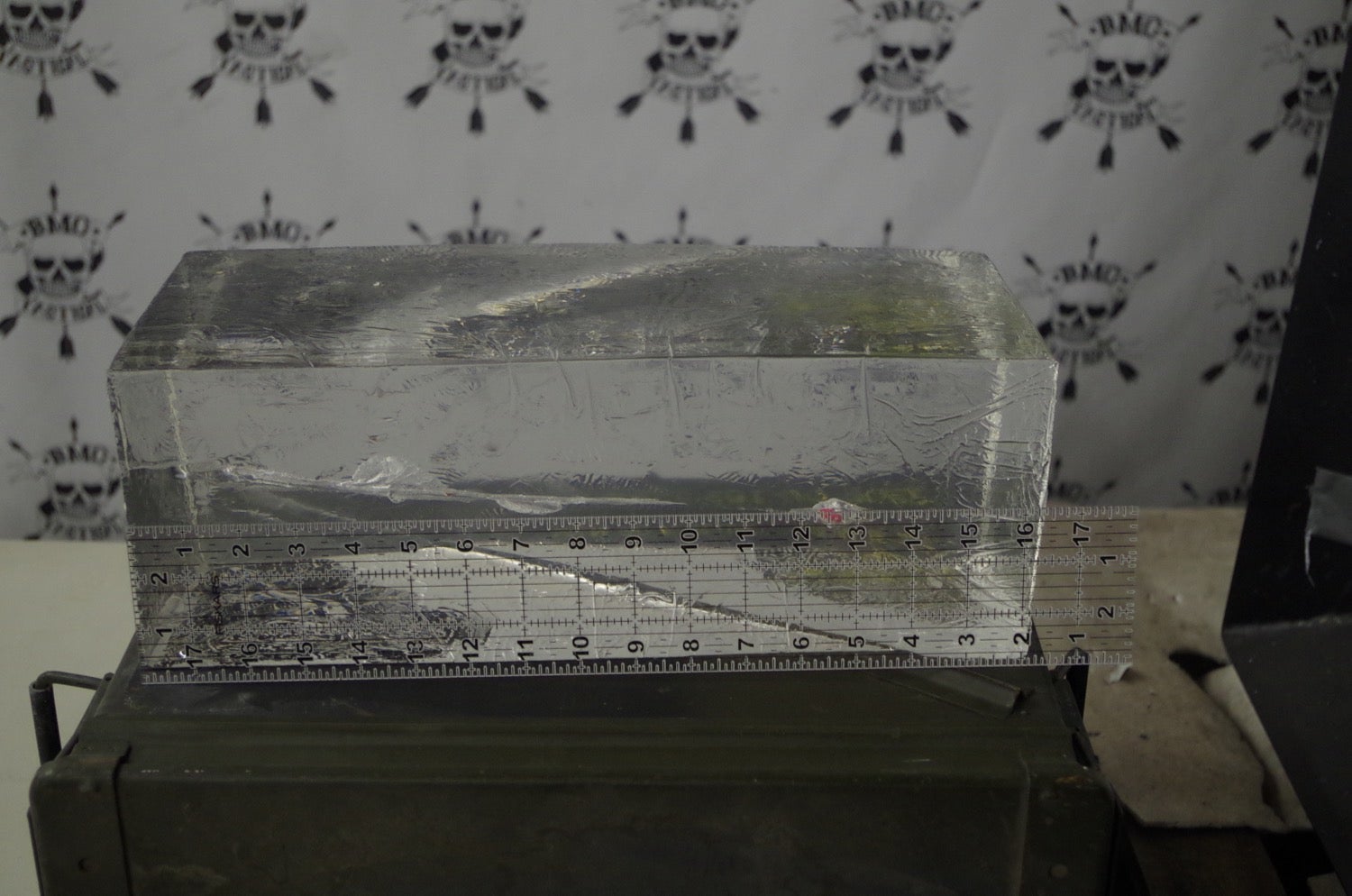
Bare Gel – 9mm – Side
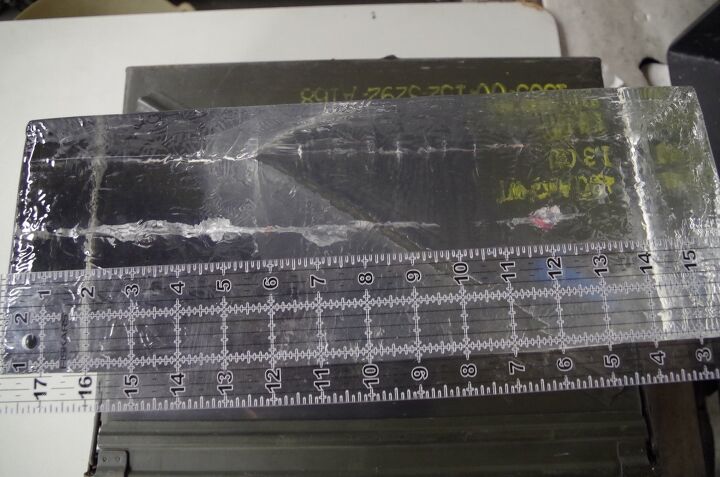
Bare Gel – 9mm – Top
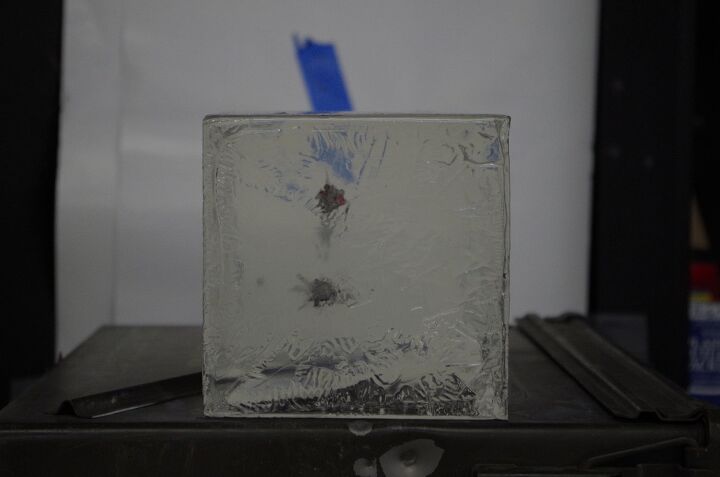
Bare Gel – .45 ACP – Front
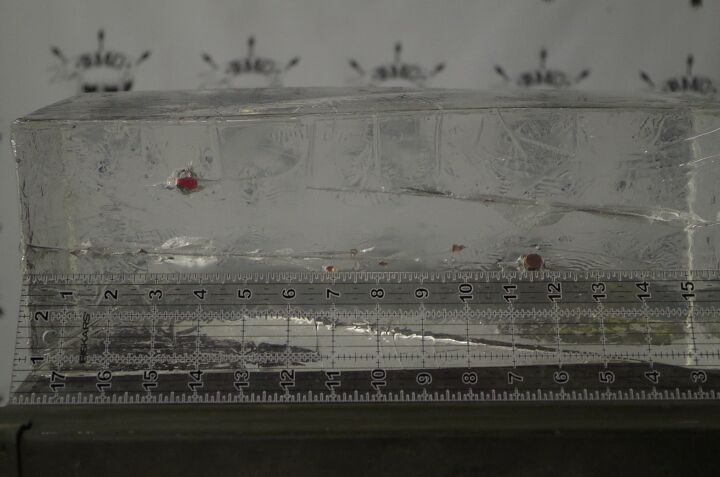
Bare Gel – .45 ACP – Side
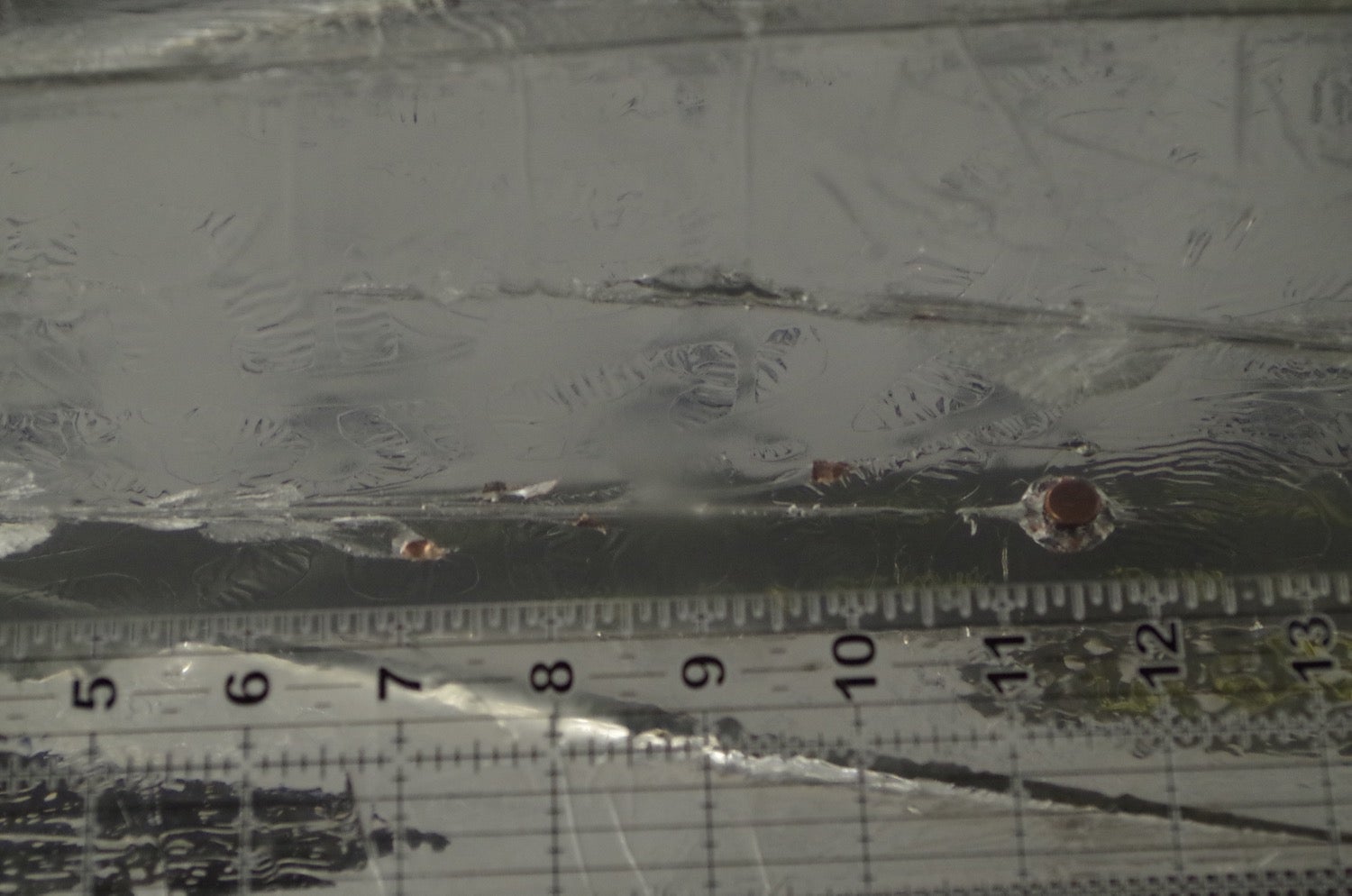
Bare Gel – .45 ACP – Top
Findings
The 9mm round penetrated the gel past 12 inches, staying together, and generating a minimal permanent wound channel. The .45 ACP fragmented, losing some of the outer copper around 6 inches in.
The .45 ACP round would not technically pass the FBI standards as a significant portion of the mass did not penetrate twelve inches (though it was close; and this was only one trial).
Test 2: Heavy Clothing
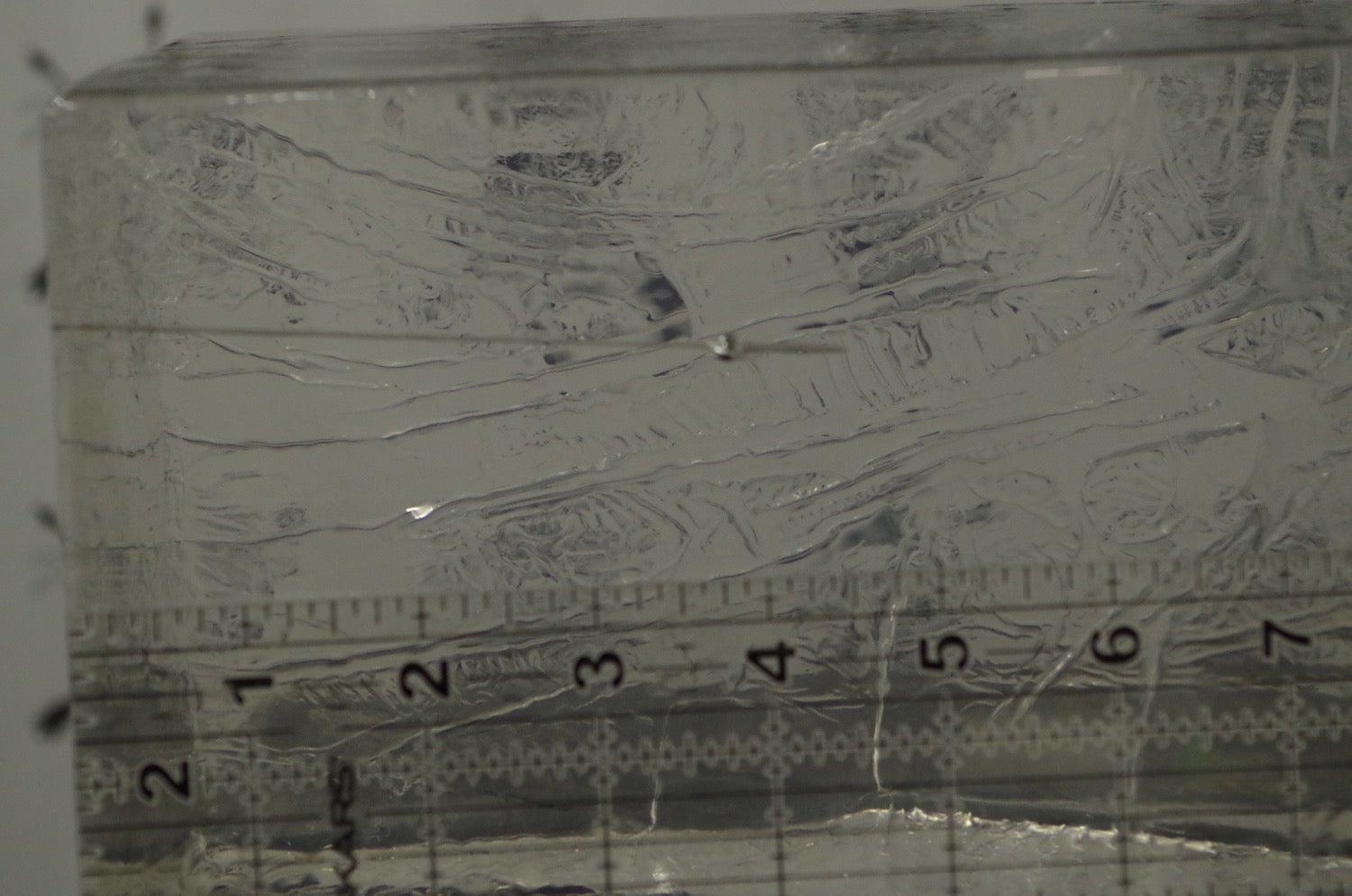
Clothing – BB
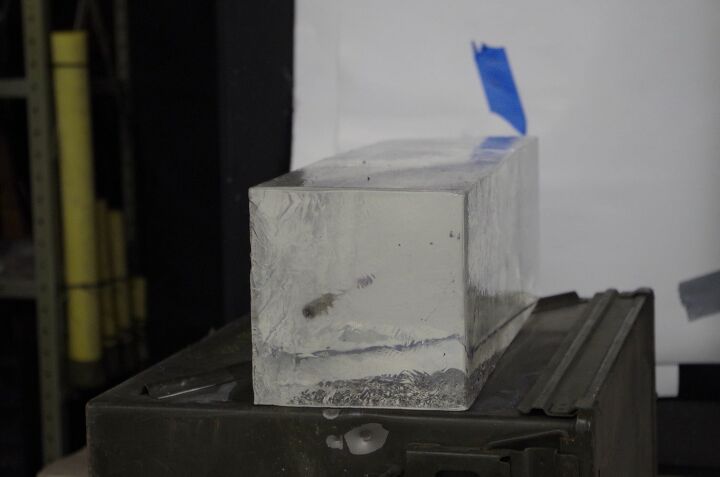
Clothing – 9mm – Front
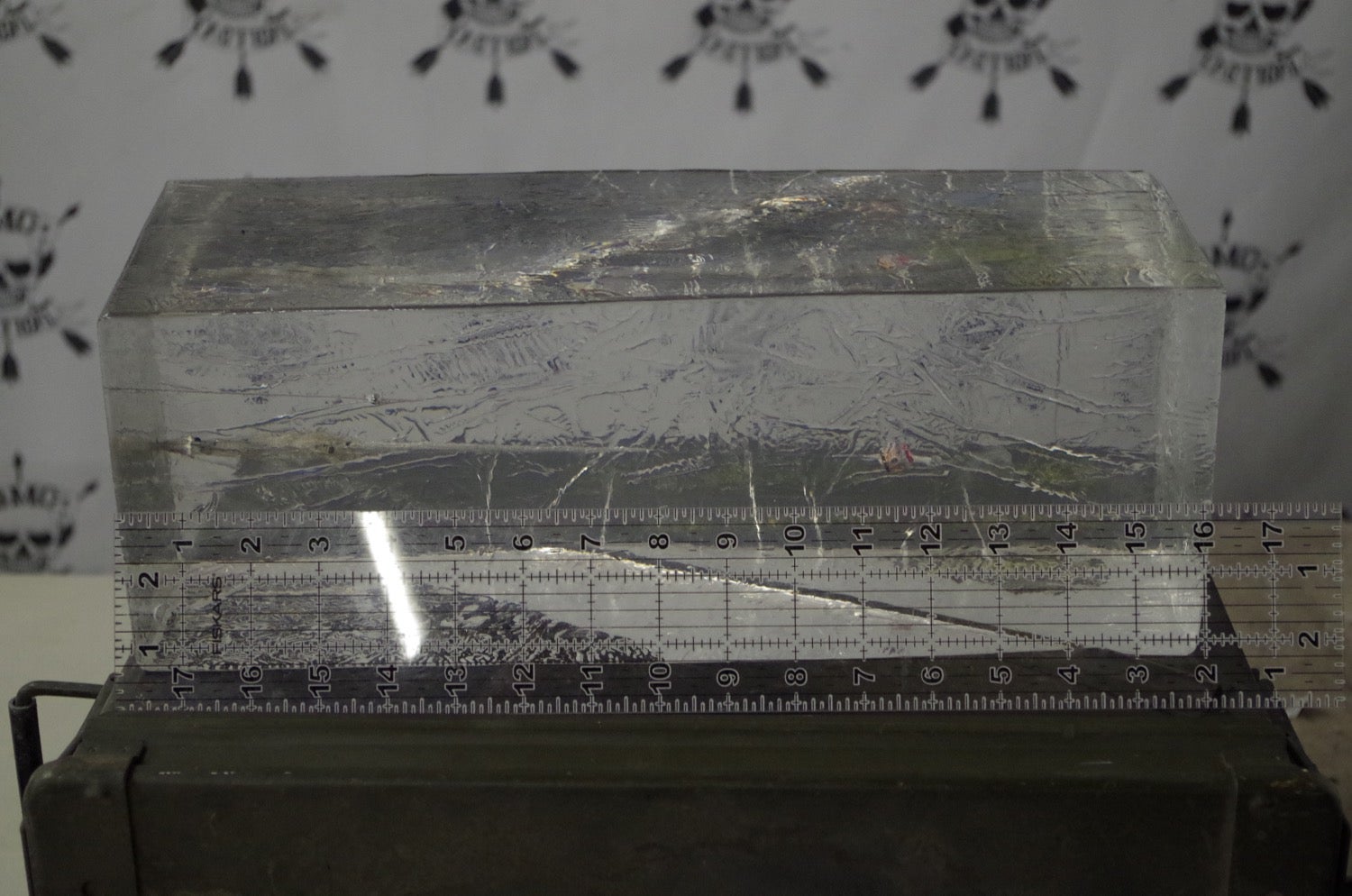
Clothing – 9mm – Side
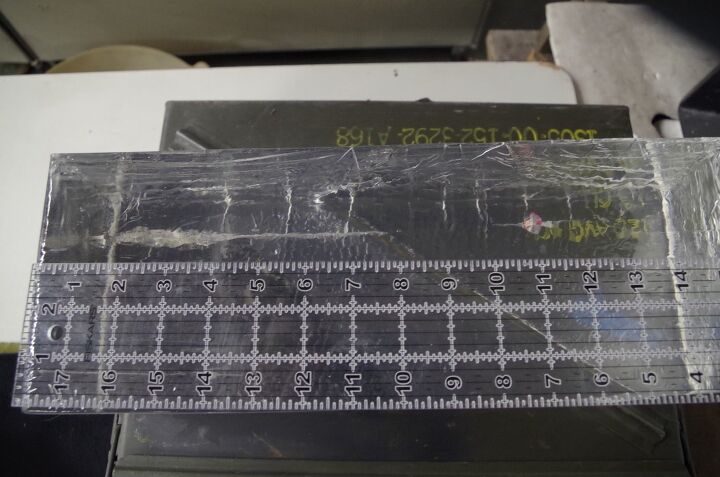
Clothing – 9mm – Top
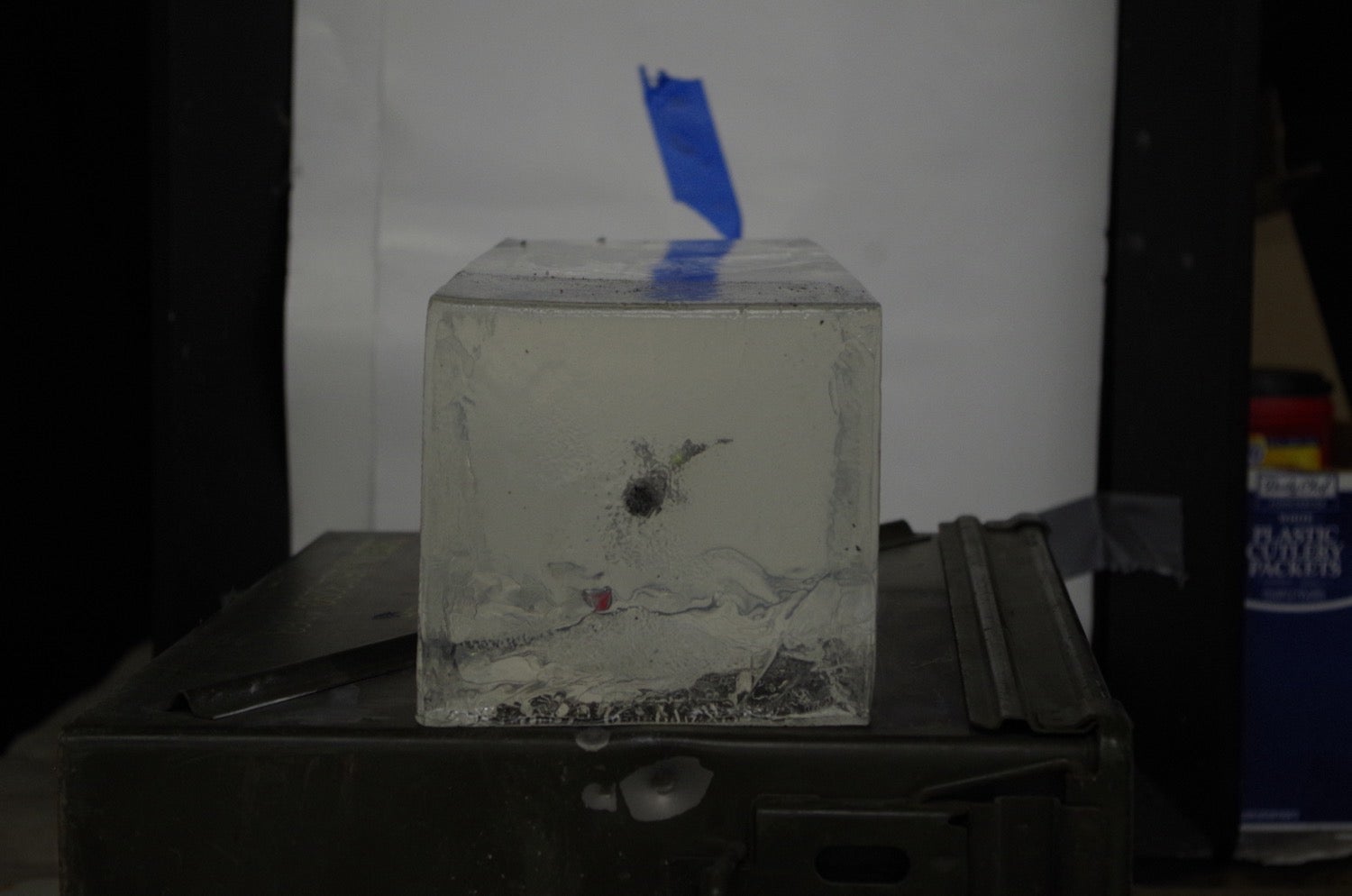
Clothing – .45 ACP – Front
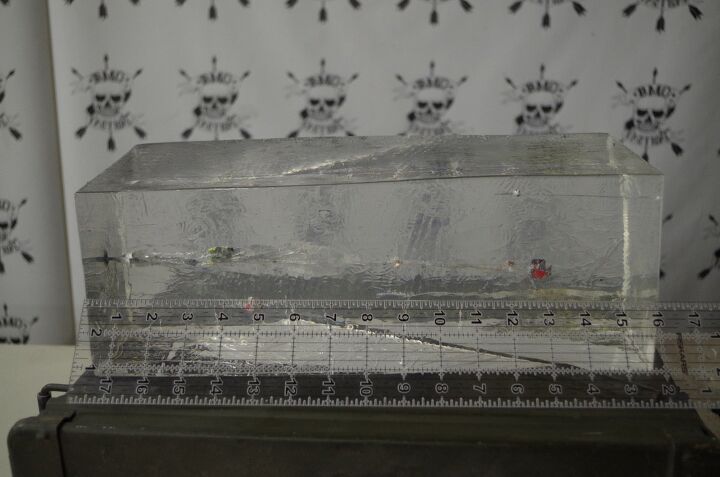
Clothing – .45 ACP – Side
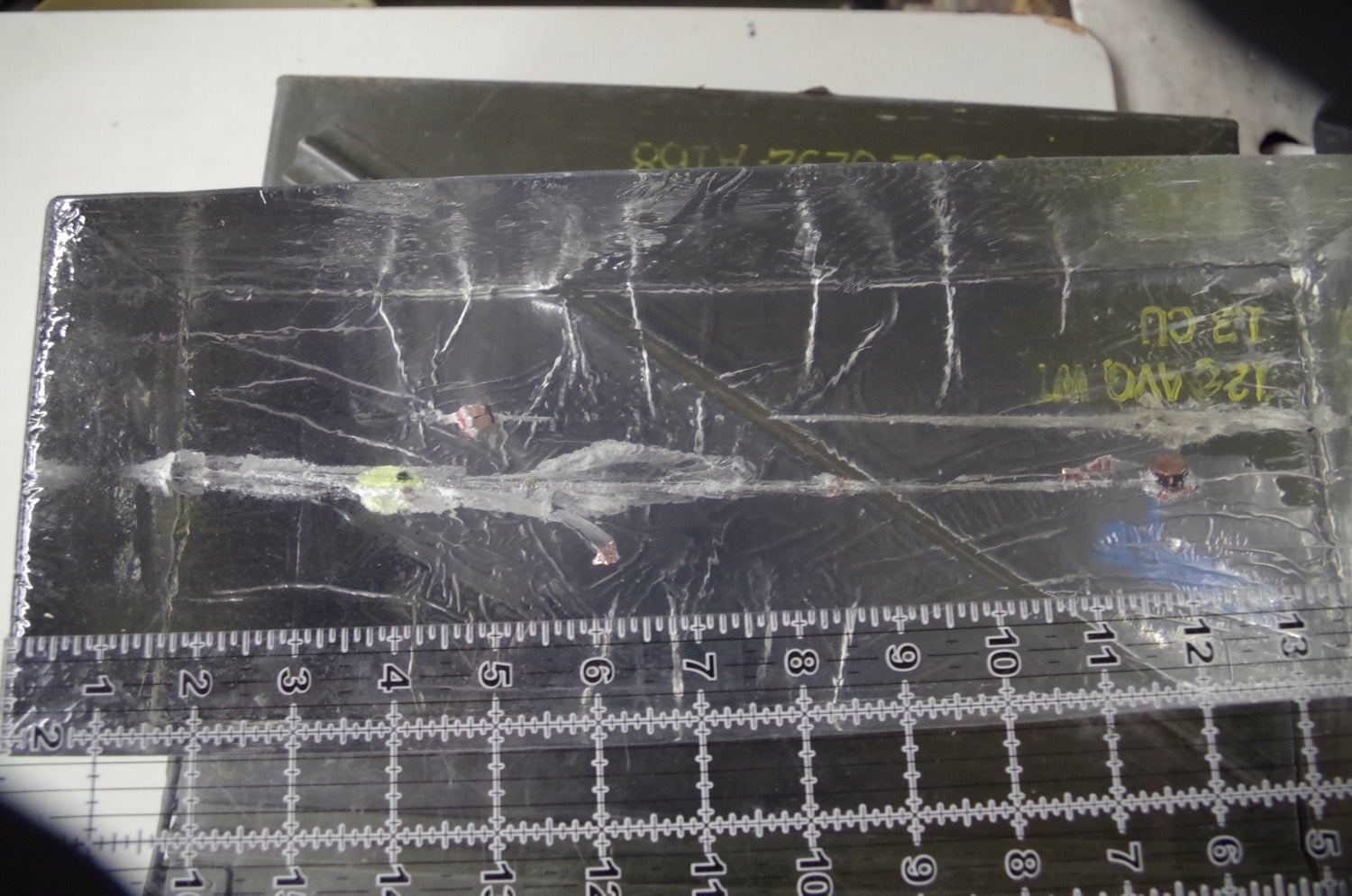
Clothing – .45 ACP – Top. I’m super proud of this shot–the round took the entire aiming dot inside the gel (leaving it about 4 inches in).
Findings
The rounds in this test show reversed results. The 9mm round was just short of the 12 inch requirement, while the .45 ACP penetrated 13 inches. Again, we see the .45 ACP round losing pieces of the jacket (this time about the 5 inch mark).
The 9mm round would not technically pass the FBI standards as a significant portion of the mass did not penetrate twelve inches (though again this was only one test).
Test 3: Dry Wall
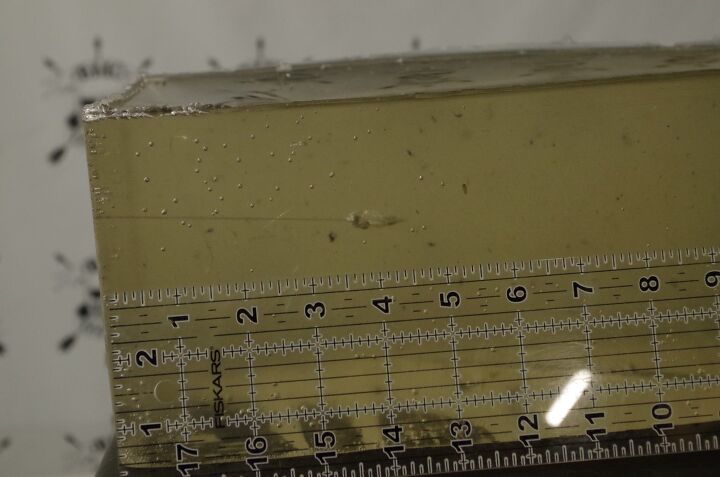
Dry Wall – BB
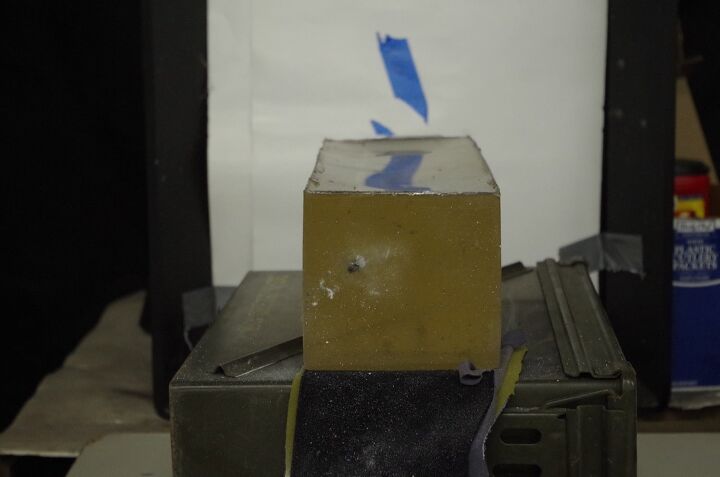
Dry Wall – 9mm – Front
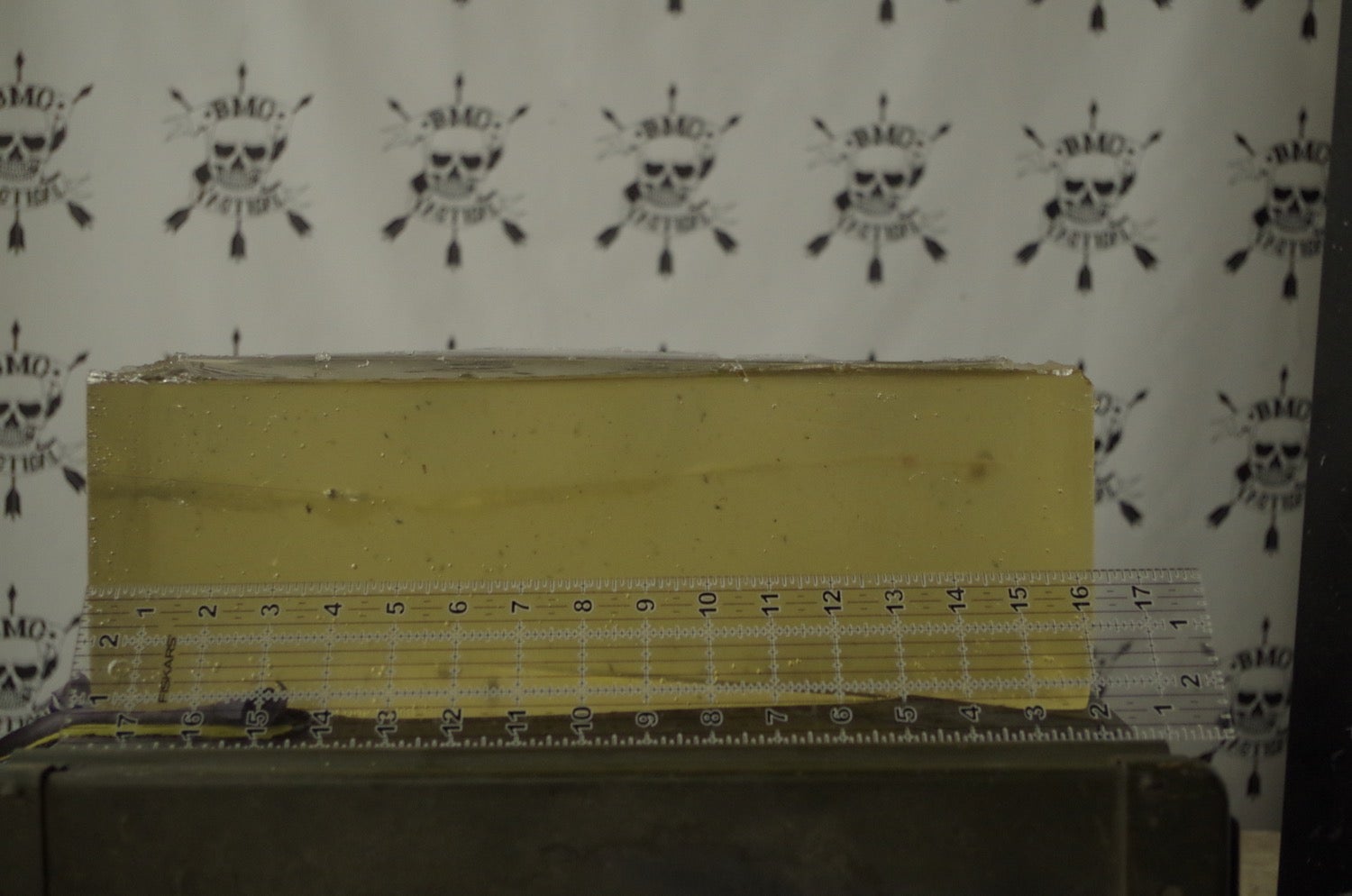
Dry Wall – 9mm – Side
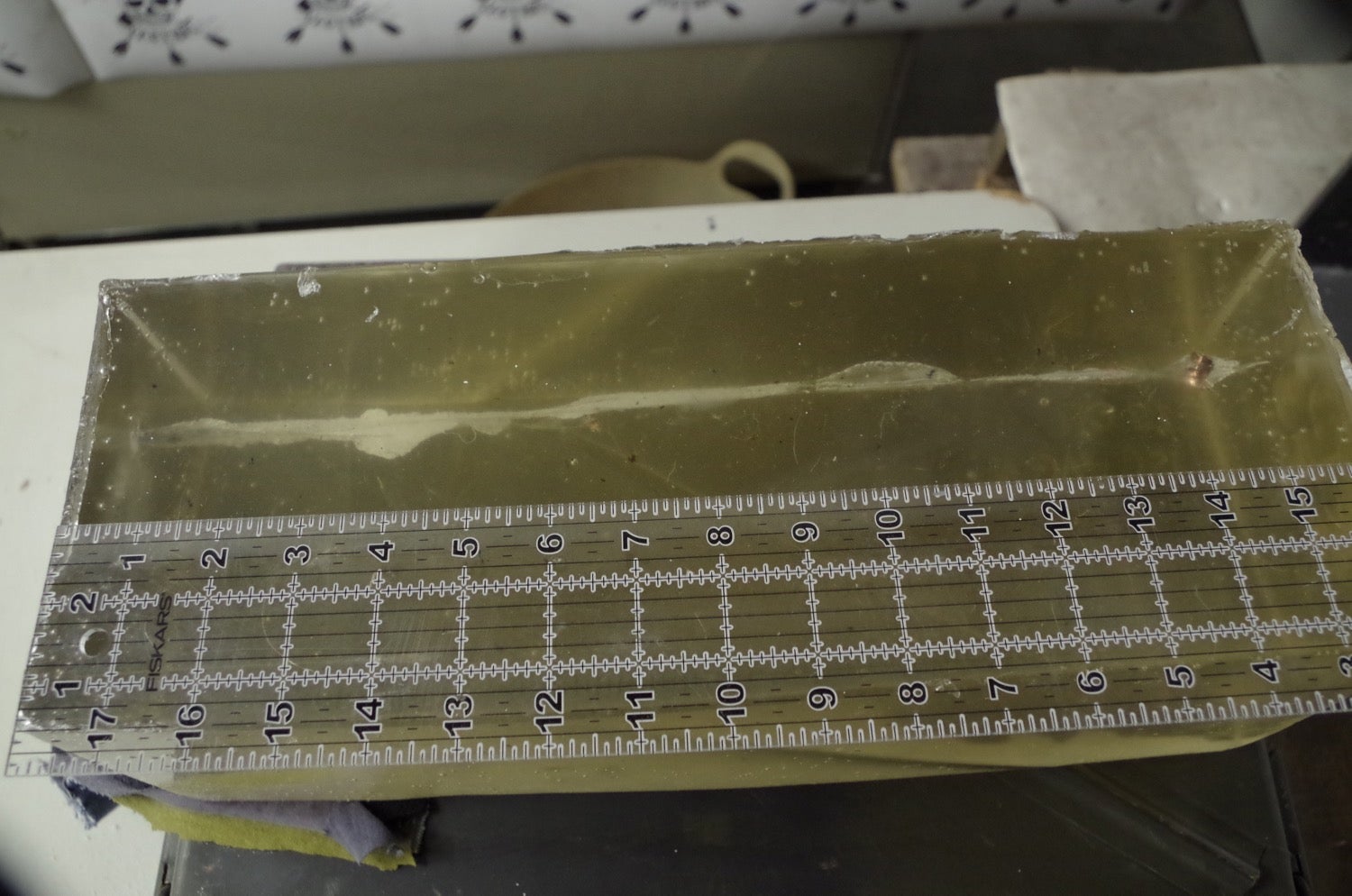
Dry Wall – 9mm – Top
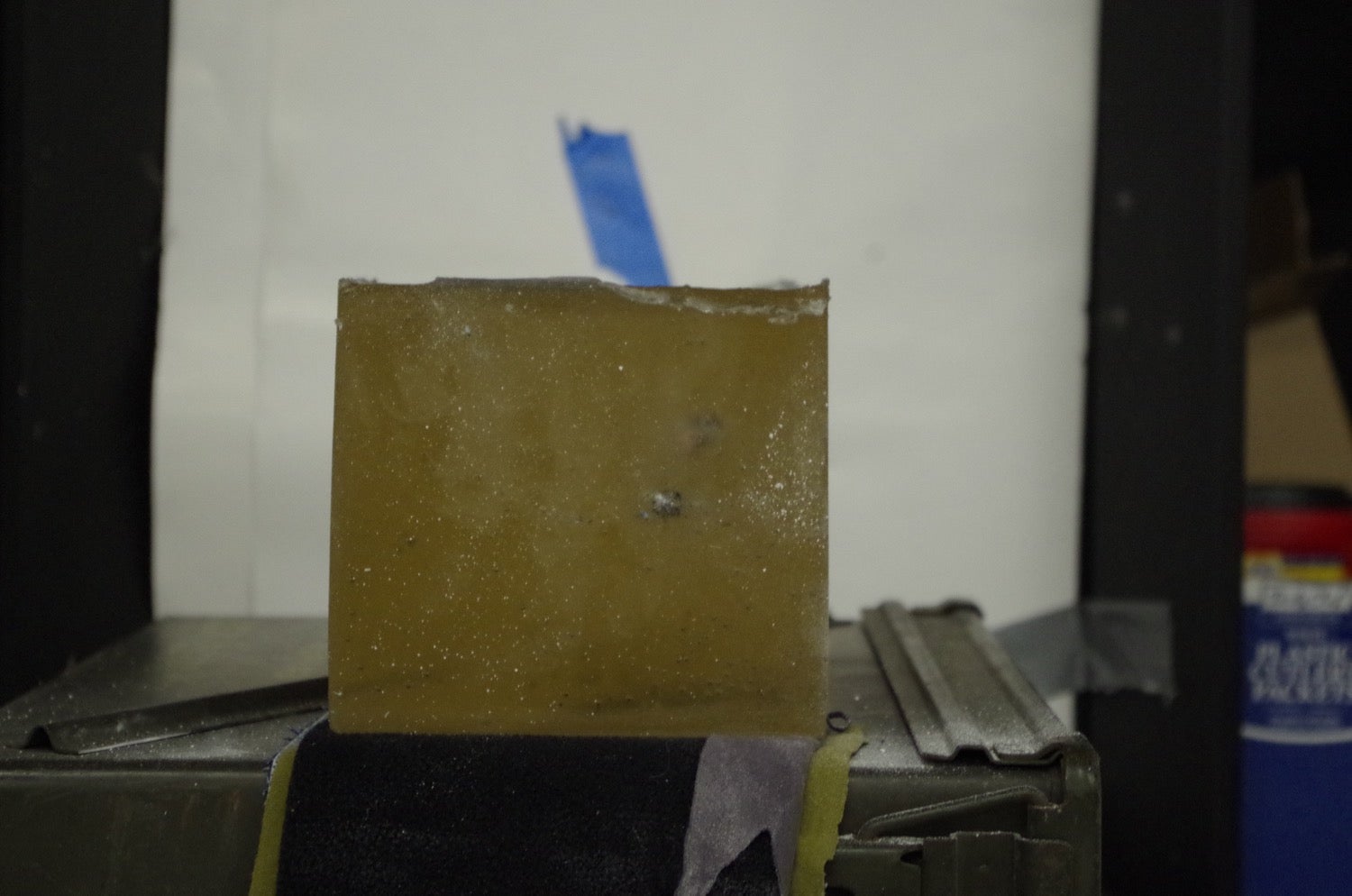
Dry Wall – .45ACP – Front
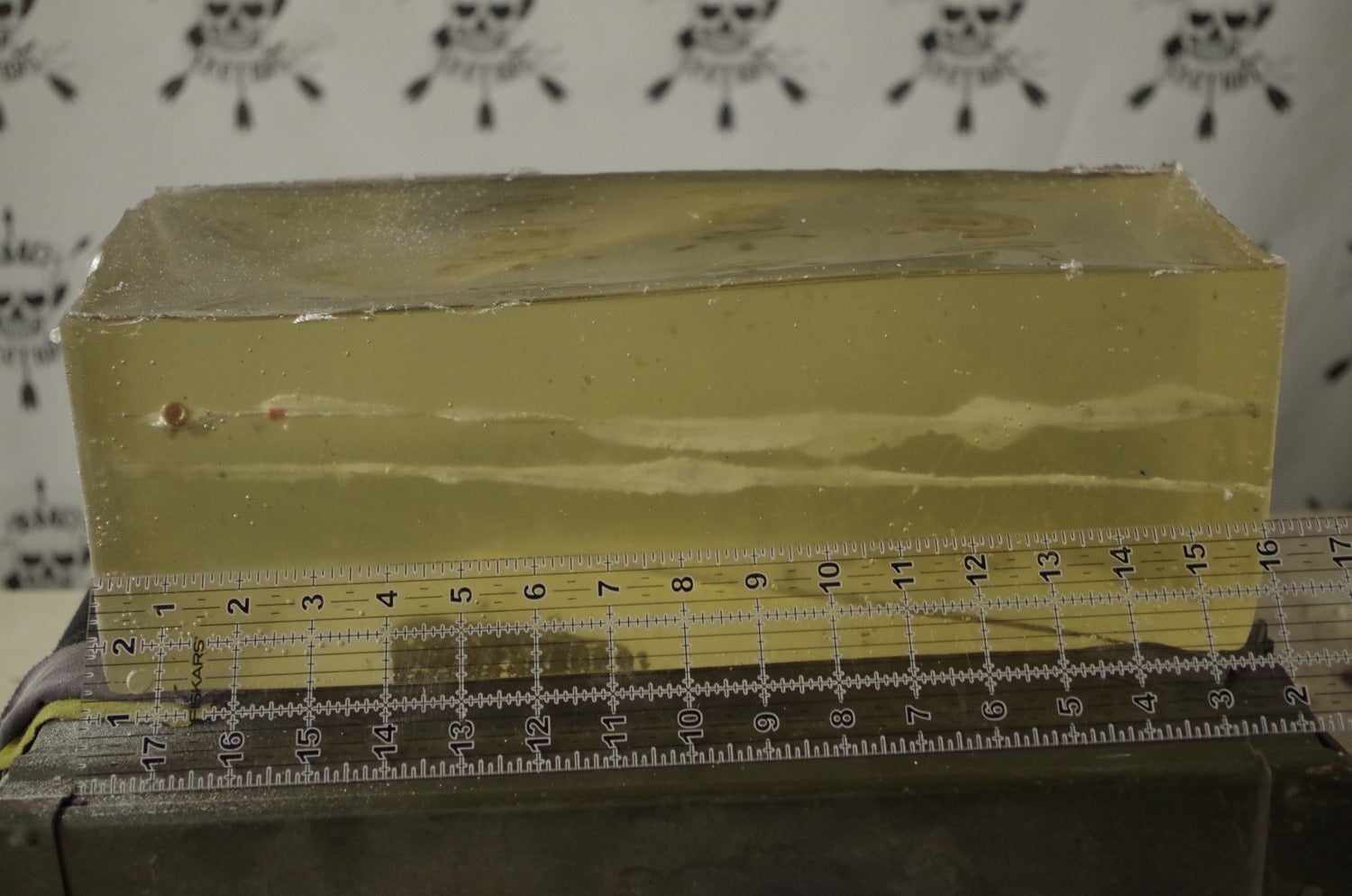
Dry Wall – .45 ACP – Side
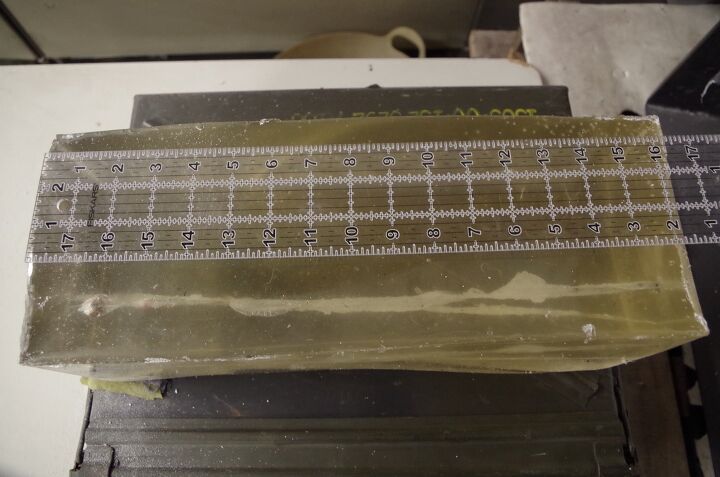
Dry Wall – .45ACP – Top
Findings
Both rounds penetrated the minimum 12 inches, though the .45 ACP exited the gel. Hornady does note that the Critical Defense round is not meant for “situations that require superior barrier performance”, but in the very next sentence they state “bullet will expand reliably and will not clog like standard hollow point bullets when fired through heavy clothing”. Which is what we saw, but why would drywall be different with respect to its ability to clog? We would assume that really any round with a cavity that promotes expansion would pick up debris.
Test 4: Automotive Glass
The automotive glass was conducted using Tom G’s scaffold from the previous tests we did. This time we were able to cut the windshield down into more manageable pieces. The glass was placed at a forty-five degree tilt, rotated forward by fifteen degrees, and set eighteen inches in front of the gel.
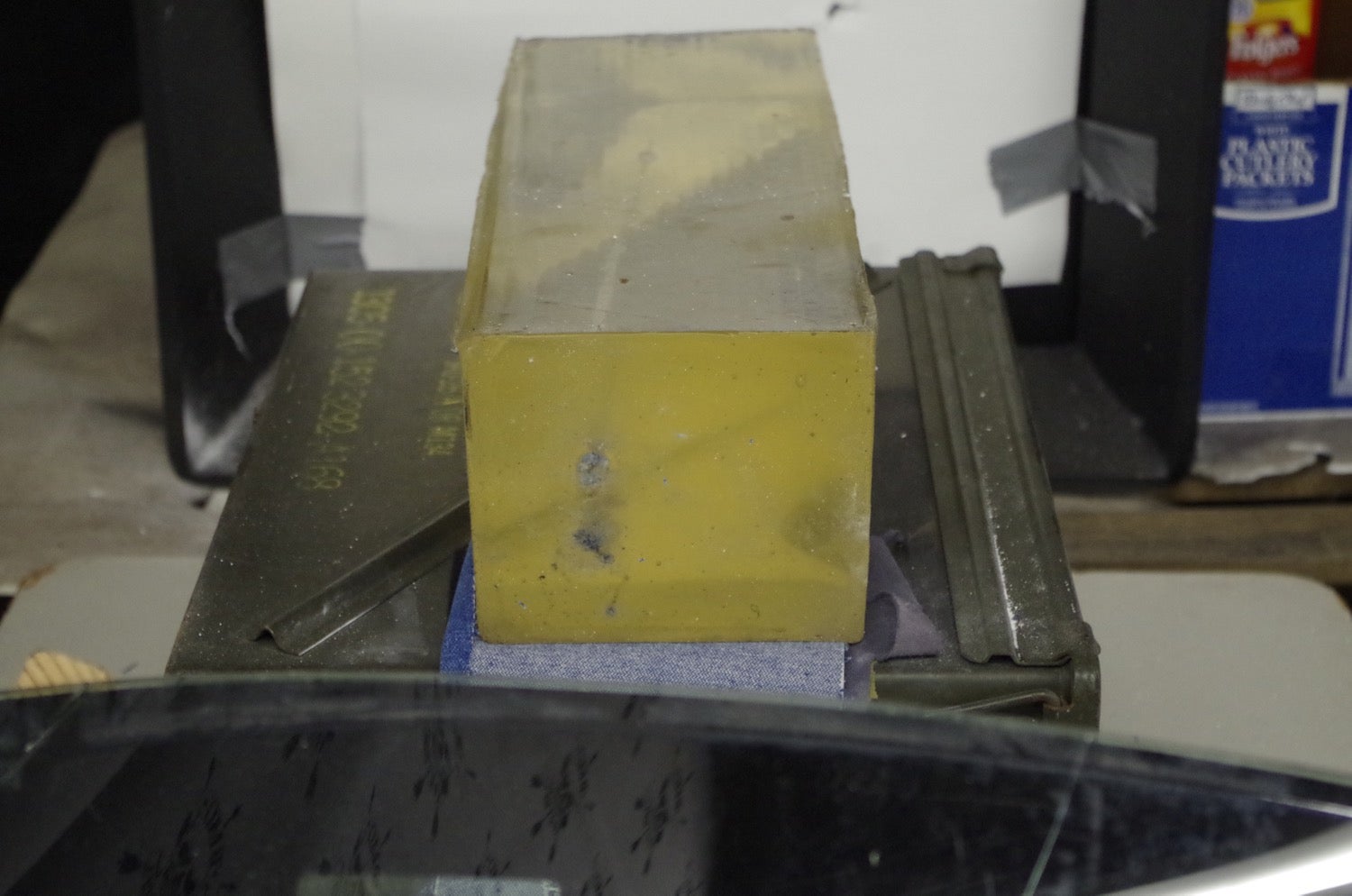
Glass – 9mm – Front
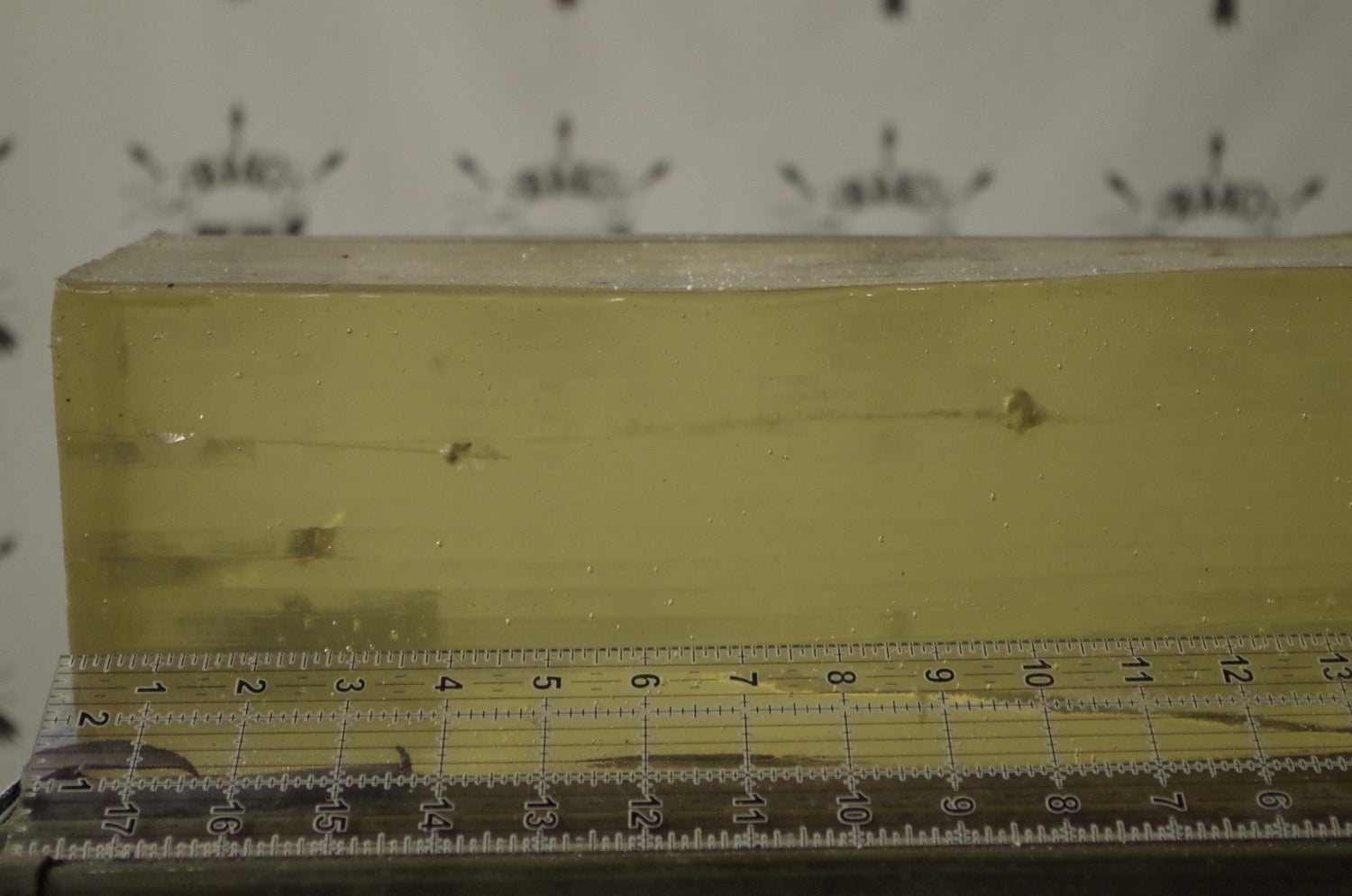
Glass – 9mm – Side
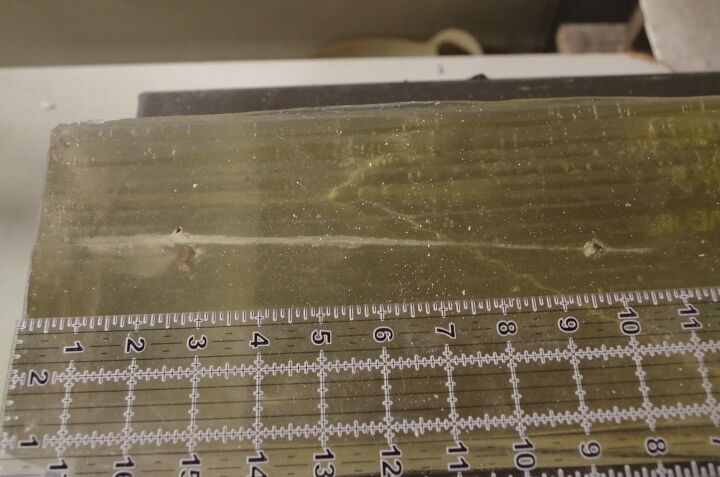
Glass – 9mm – Top
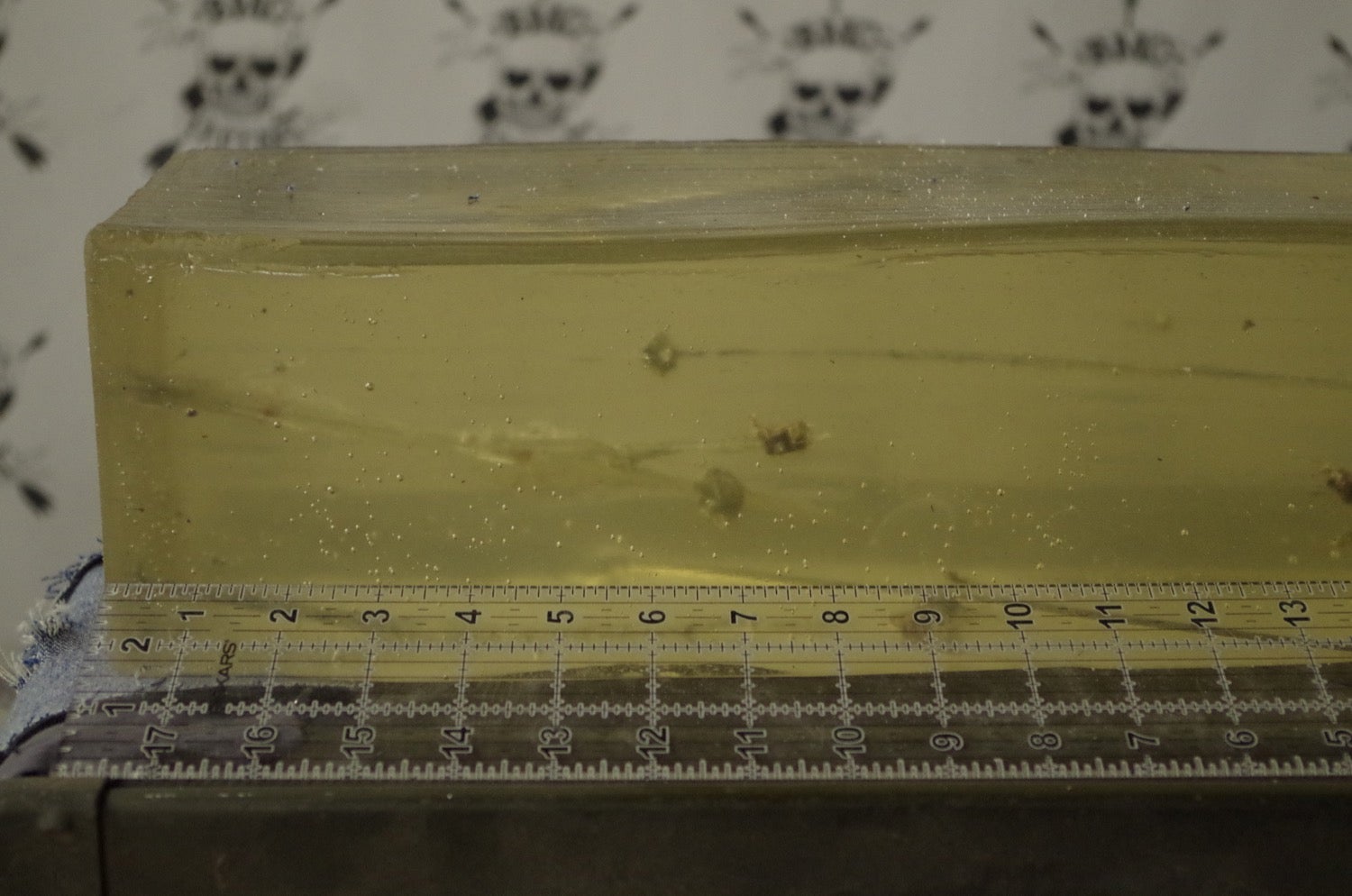
Glass – .45 ACP – Side (2nd test; you can see the entry of the first test down and slightly to the right of the lower entry channel)
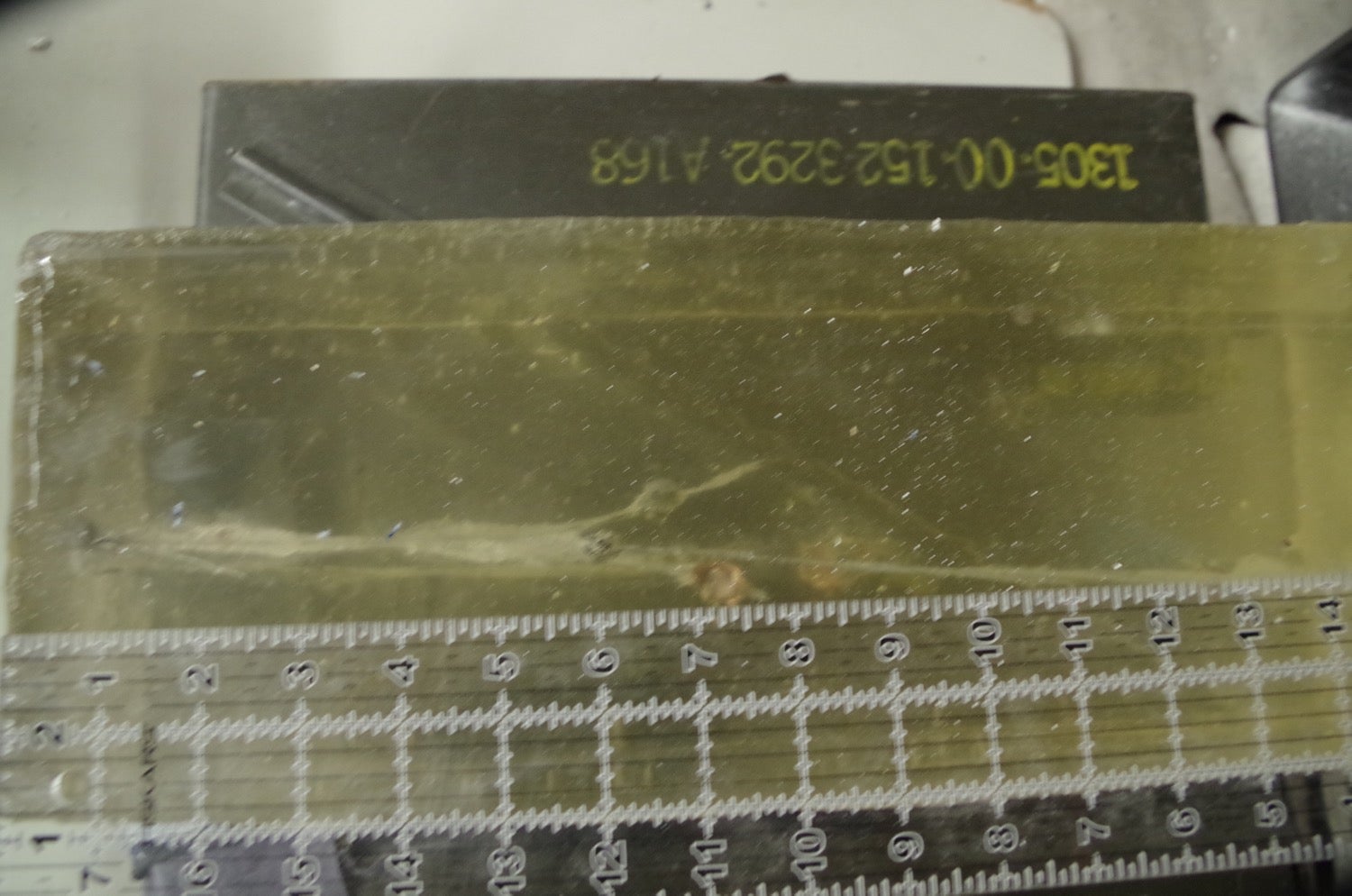
Glass – .45 ACP – Top
Findings
As in other tests, this test was the most interesting of the set.
The 9mm round fragmented after penetrating the glass and created two entry points into the gel. The larger portion of the round penetrated almost 10 inches.
The first round (of .45 ACP) was deflected downward nearly two and a half inches and entered the gel near the bottom, skipping along the ammo can we had the gel staged on, and deflecting back into the gel.
Since we were interested in the effects against the gel, we re-conducted the test. This time we placed the aiming dot about 2 inches higher (we had to raise the glass scaffold as the glass segment was too small). The round was still deflected down at nearly the same angle, but did make it into the gel. The round came apart about 4.5 inches in with the farthest traveling piece making it 7.5 inches into the gel.
Neither the 9mm, nor the .45 ACP round, would technically pass the FBI standards as a significant portion of the mass did not penetrate twelve inches.
Conclusions
Tom G: Hornady Critical Defense ammunition was designed to reliably expand upon impact. Hornady Critical Defense was not designed for extreme barrier penetration, though Hornady does mention in their product literature that this round was designed to penetrate heavy clothing, expand reliably and pass the FBI standards in regards to penetration. The rounds we tested were very near to the the FBI criteria for penetration in the bare gel as well as Heavy Clothing tests. The 9mm round fragmented when shot through glass though it did perform well in the dry wall test. For general concealed carry this round would work fairly well.
Tom R: The rounds behaved as advertised, doing well against bare gel and heavy clothing, but having mixed results going through the dry wall and glass. Personally, I’m not entirely sure why they made a separate round (the “Critical Duty”) to do this. As I have mentioned before, I want consistency in my ammo. In a “self-defense” scenario, trying to remember that your load is going to have different performance depending on what it is passing through is just not going to happen with the average monkey–I would say that most people need something that will be reliable no matter how and where it is used.
As we have seen in a number of tests, rounds penetrating dry wall seem to have some deflection, and generally have been over penetrating–even rounds that don’t have a hollow cavity to collect debris.
The automotive glass showed significant downward deflection with the .45 ACP round (as well as caused the round to come apart–a behavior we did not see in the other tests). We repeated the test as the round attempted to exit the gel early, but was deflected back into the gel by the can. The 9mm stayed in the gel, but did also come apart.
We can debate the efficacy of the FBI standard (in the comments), but it is a pretty well defined and understood test at this point, and provides a good way to compare rounds.
Credits
Thanks to Clark Armory and BMC Tactical for sponsoring and supporting this test. Clark Armory provided the Ballistic Gel from ClearBallistics and the Hornady Critical Defense Ammo (they did not have a link on their site–which is very cool that they sent us this round to test anyway).
BMC Tactical provided an indoor lane with consistent lighting and temperature to run the test.
We appreciate these two companies providing necessary materials and infrastructure for the tests.
 Your Privacy Choices
Your Privacy Choices
